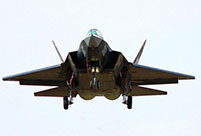 Top 100 beauties in the world!
Top 100 beauties in the world!
 Gallery: Who is the most beautiful one?
Gallery: Who is the most beautiful one?
 If you like autumn, put your hands in the air!
If you like autumn, put your hands in the air!
 Fan Bingbing's "Queen style" in new play
Fan Bingbing's "Queen style" in new play
 Lingerie show at 2014 Miss China
Lingerie show at 2014 Miss China
 J-10 fighters show aerobatic stunts in smog-free sky
J-10 fighters show aerobatic stunts in smog-free sky
 Charming contestants of Shanghai Int’l Model Contest
Charming contestants of Shanghai Int’l Model Contest
 Most amazing chi-pao beauties
Most amazing chi-pao beauties
 7 deadly animal attacks
Russia to launch 70 Proton rockets by 2020: official
7 deadly animal attacks
Russia to launch 70 Proton rockets by 2020: officialZHUHAI, Guangdong, Nov. 11 -- After successfully putting the "Jade Rabbit" lunar rover on the moon, Chinese space experts say the country's planned Mars vehicle will be larger, tougher and a better climber.
On Tuesday, a real-sized model of the Mars rover is on display at the Airshow China 2014 in south China's Zhuhai City, offering a rare glimpse of the spacecraft still being designed.
"Our current concept is that it will have six wheels, like Yutu (Jade Rabbit), but will be larger in size and better at crossing obstacles," says Jia Yang, who led the team that developed Yutu.
"Yutu can climb over obstacles no higher than 20-centimetres, but has to bypass larger rocks. This will not work on Mars, where places are full of large rocks like in the Gobi Desert. So we must improve its adaptability to complex territory," he said.
The 2-meter-long model on display is the prototype. Its final look and functions are yet to be decided.
China has not announced an official plan for a Mars probe, but Ouyang Ziyuan, a lead scientist in China's moon probe mission, has said China plans to land a Mars rover around 2020, collect samples and bring them back around 2030.
Jia expects the Mars buggy to be solar-powered, its weight close to NASA's Spirit and Opportunity rovers at about 180 kg. NASA's latest Curiosity rover weighs 900 kg and is powered by nuclear battery, but Jia says the capability of China's carrier rockets limits the size of its Mars rover.
Yutu reported a mechanical malfunction during the second lunar day after its successful landing in December last year, prompting Chinese experts to stress the fault response on the Mars rover.
"The Mars environment is more complicated and adverse than that of the moon. We're working to overcome the worst scenario - dust storms that will significantly lower the energy output of the solar battery," Jia says.
Displayed with the rover is a model of a capsule designed to carry the vehicle into the planet's atmosphere. Jia says they are still working on the capsule's parachute and heat-proof structure that will enable it to land in the extremely thin air, one of the hardest parts of the Mars mission.
Forty-three probes have been sent to Mars since 1960, of which 19 succeeded.
 World Pole Dance Championship in China
World Pole Dance Championship in China In pics: PLA stages live-fire drill in NE China
In pics: PLA stages live-fire drill in NE China  59-year-old Liu Xiaoqing still looks stunning
59-year-old Liu Xiaoqing still looks stunning  Standard faces for each countries in the world
Standard faces for each countries in the world Shocking! Photos of Chinese fighters revealed
Shocking! Photos of Chinese fighters revealed Images of angels in white: At work v.s off work
Images of angels in white: At work v.s off work  Post-85s female pilots and their mission
Post-85s female pilots and their mission Netizens fall in love with champion swimmer Ning Zetao
Netizens fall in love with champion swimmer Ning Zetao Vibrant 21-year-old and her own Cheongsam brand
Vibrant 21-year-old and her own Cheongsam brand Top 10 most dangerous jobs in the world
Top 10 most dangerous jobs in the world  Top 10 fifth generation jet fighters in the world
Top 10 fifth generation jet fighters in the world Top 10 Chinese goddesses
Top 10 Chinese goddesses  Top 20 hottest women in the world in 2014
Top 20 hottest women in the world in 2014 Top 10 pure beauties in showbiz
Top 10 pure beauties in showbiz  Top 10 world's highest-paid models 2014
Top 10 world's highest-paid models 2014 The most gorgeous Chinese women
The most gorgeous Chinese women Top 10 most handsome faces in Asia
Top 10 most handsome faces in AsiaDay|Week|Month